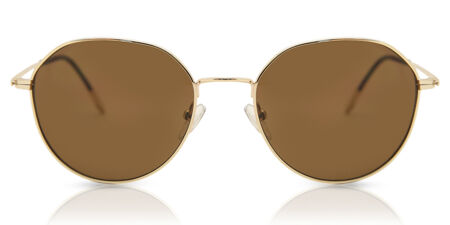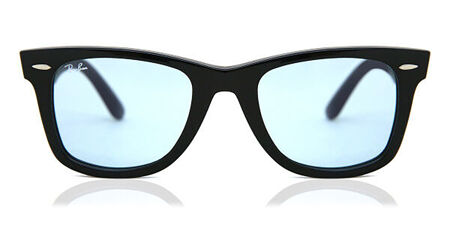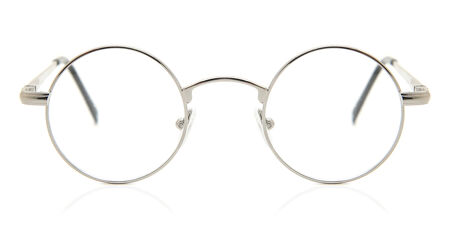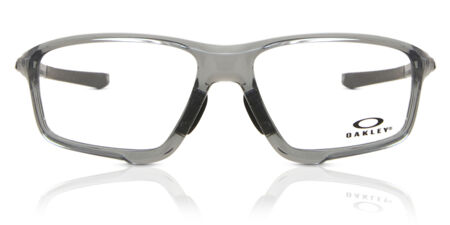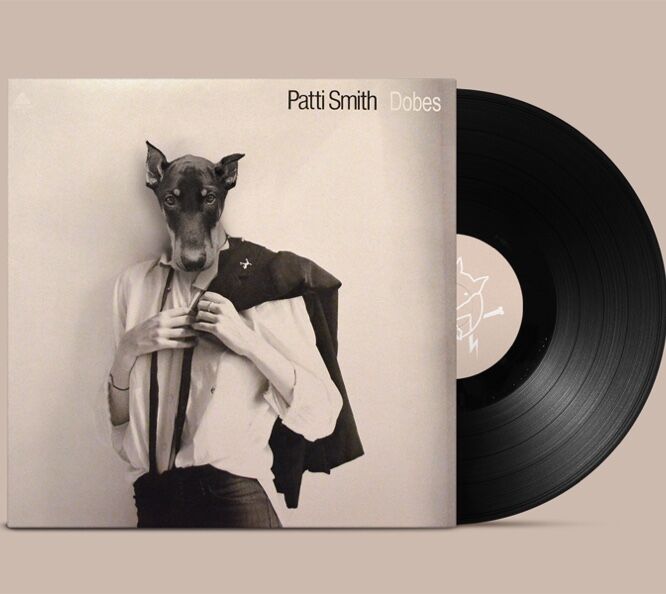
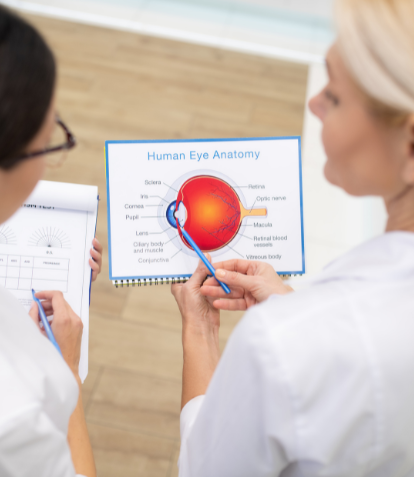
The Basics of Eye Anatomy
The eye is a complex organ that allows us to see the world around us. There are several different parts, each with a specific function. Understanding eye anatomy can help us understand how our eyes work and why we need to take care of them. Whether you wear prescription glasses or not, keeping your eyes healthy is essential.
What is the anatomy of the eye?
Eye Structure
The eye has two main parts: the cornea and the lens. The cornea is the clear, curved surface at the front of the eye. It helps to focus light onto the retina, which is the sensitive layer of tissue at the back of the eye. The lens is a clear structure behind the cornea that helps to further focus light onto the retina. The retina is responsible for converting light into electrical signals that get sent to the brain. Then, the brain interprets these signals as images.
Different parts of the eye
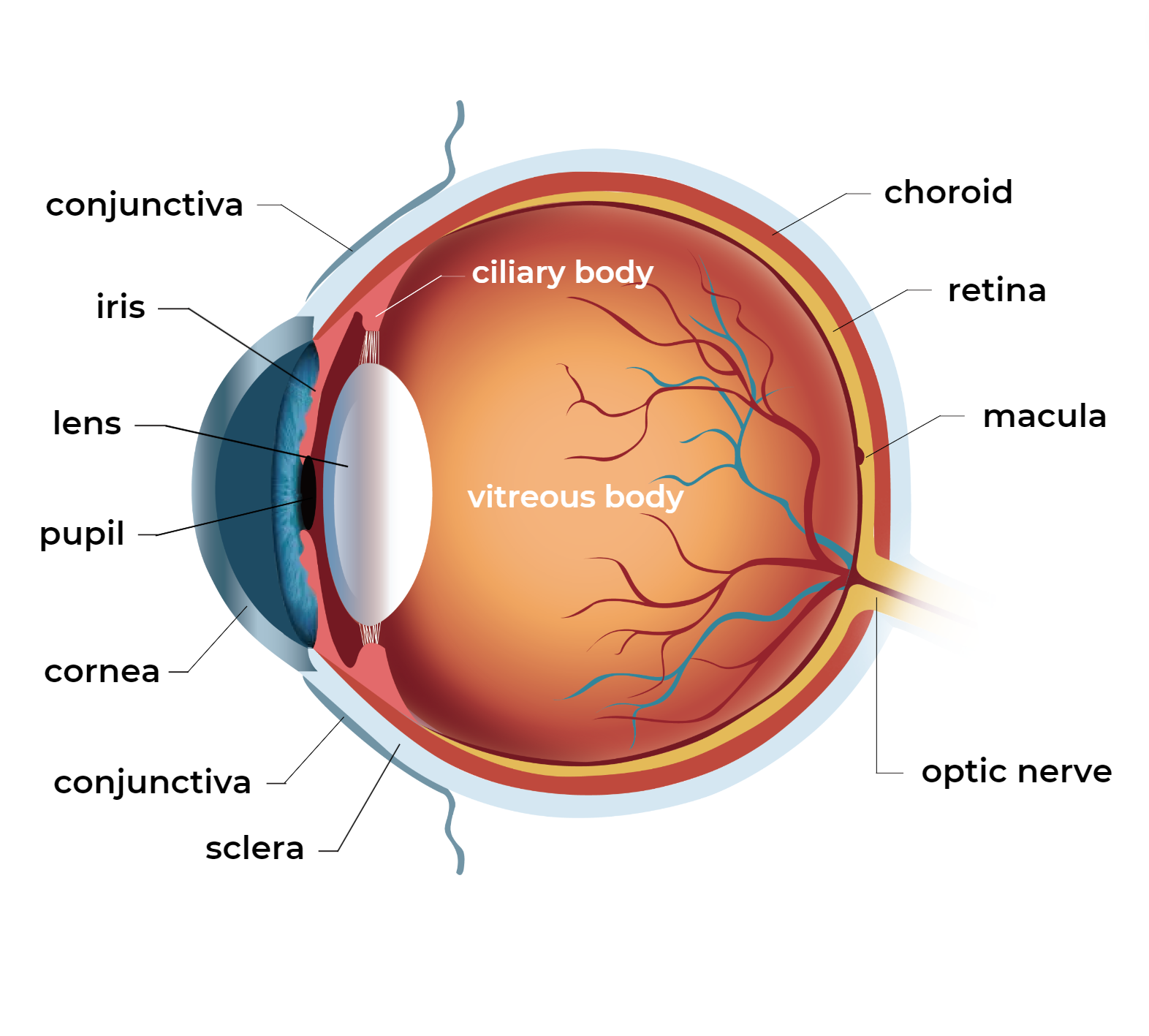
Choroid
• The choroid is a thin layer between the eye’s sclera (white outer layer) and the retina (inner light-sensitive layer). This part of the eye contains blood vessels that help bring oxygen and nutrients to the eyeball.
Ciliary Body
• The Ciliary Body contains muscle that focuses the lens and produces clear fluid between the Cornea and Iris.
Fovea
• The Fovea is found in the centre of the macula and provides sharp central vision.
Iris
• The Iris is the coloured part of the eye that controls the pupil size to allow less or more light to enter the eye.
Macula
• The macula transforms light that enters your eye into the pictures you see, together with the rest of your retina. It controls your central vision, which enables you to see things in front of you.
Optic Nerve
• Your eyesight relies on the optic nerve. It is a continuation of your spine and brain’s central nervous system. Your eyes send electrical signals to your brain via the optic nerve. Your brain processes sensory data for you to see.
Pupil
• The Pupil is like the gateway to the eye. It admits and controls the passage of light to the retina. The pupil opens and closes to regulate the quantity of light permitted to enter the eye. This step in the process contributes to how we see pictures.
Retina
• The retina is the layer at the very back of your eyeball. It converts the light that enters your eye into electrical impulses that your optic nerve transmits to your brain, which produces the pictures you see. It’s an essential aspect of your vision.
Sclera
• The sclera serves as the eyeball’s retaining wall. It safeguards your eyeball from harm and helps it maintain its shape. The conjunctiva covers the sclera, which are transparent mucous membranes that lubricate (moisturise) your eye to avoid dryness.
Vitreous Humor
• Water makes up most of the vitreous humor, a transparent, gelatinous material. It is crucial to meet the lens’ nutritional requirements for metabolism, regulating eye development and supporting the retina.
The eyeball is surrounded by several other parts that help to protect and keep it healthy. These include the eyelids, which keep the eye clean and moist; the conjunctiva, a thin layer of tissue covering the front of the eye; and the tear ducts, which produce tears to keep the eye lubricated.
Why are parts of the eye important?
Each part of the eye plays a vital role in helping us to see. Without any one of these parts, our vision would be affected. That’s why it’s crucial to understand eye anatomy and see an eye doctor regularly so you can take care of your eyes. An optician can check for any eye problems and provide you with tips for eye care.
At SmartBuyGlasses, we care about your eyesight and want to provide you with all the information you need. Now that you know the basics of eye anatomy, take a look at what you can do to keep your eyes healthy and avoid unwanted eye problems. If you want to learn more, remember to read our Optical Centre articles and speak to one of our opticians online for any questions you might have.
The Basics of Eye Anatomy
The eye is a complex organ that allows us to see the world around us. There are several different parts, each with a specific function. Understanding eye anatomy can help us understand how our eyes work and why we need to take care of them. Whether you wear prescription glasses or not, keeping your eyes healthy is essential.
What is the anatomy of the eye?
Eye Structure
The eye has two main parts: the cornea and the lens. The cornea is the clear, curved surface at the front of the eye. It helps to focus light onto the retina, which is the sensitive layer of tissue at the back of the eye. The lens is a clear structure behind the cornea that helps to further focus light onto the retina. The retina is responsible for converting light into electrical signals that get sent to the brain. Then, the brain interprets these signals as images.
Different parts of the eye

Choroid
• The choroid is a thin layer between the eye’s sclera (white outer layer) and the retina (inner light-sensitive layer). This part of the eye contains blood vessels that help bring oxygen and nutrients to the eyeball.
Ciliary Body
• The Ciliary Body contains muscle that focuses the lens and produces clear fluid between the Cornea and Iris.
Fovea
• The Fovea is found in the centre of the macula and provides sharp central vision.
Iris
• The Iris is the coloured part of the eye that controls the pupil size to allow less or more light to enter the eye.
Macula
• The macula transforms light that enters your eye into the pictures you see, together with the rest of your retina. It controls your central vision, which enables you to see things in front of you.
Optic Nerve
• Your eyesight relies on the optic nerve. It is a continuation of your spine and brain’s central nervous system. Your eyes send electrical signals to your brain via the optic nerve. Your brain processes sensory data for you to see.
Pupil
• The Pupil is like the gateway to the eye. It admits and controls the passage of light to the retina. The pupil opens and closes to regulate the quantity of light permitted to enter the eye. This step in the process contributes to how we see pictures.
Retina
• The retina is the layer at the very back of your eyeball. It converts the light that enters your eye into electrical impulses that your optic nerve transmits to your brain, which produces the pictures you see. It’s an essential aspect of your vision.
Sclera
• The sclera serves as the eyeball’s retaining wall. It safeguards your eyeball from harm and helps it maintain its shape. The conjunctiva covers the sclera, which are transparent mucous membranes that lubricate (moisturise) your eye to avoid dryness.
Vitreous Humor
• Water makes up most of the vitreous humor, a transparent, gelatinous material. It is crucial to meet the lens’ nutritional requirements for metabolism, regulating eye development and supporting the retina.
The eyeball is surrounded by several other parts that help to protect and keep it healthy. These include the eyelids, which keep the eye clean and moist; the conjunctiva, a thin layer of tissue covering the front of the eye; and the tear ducts, which produce tears to keep the eye lubricated.
Why are parts of the eye important?
Each part of the eye plays a vital role in helping us to see. Without any one of these parts, our vision would be affected. That’s why it’s crucial to understand eye anatomy and see an eye doctor regularly so you can take care of your eyes. An optician can check for any eye problems and provide you with tips for eye care.
At SmartBuyGlasses, we care about your eyesight and want to provide you with all the information you need. Now that you know the basics of eye anatomy, take a look at what you can do to keep your eyes healthy and avoid unwanted eye problems. If you want to learn more, remember to read our Optical Centre articles and speak to one of our opticians online for any questions you might have.







































